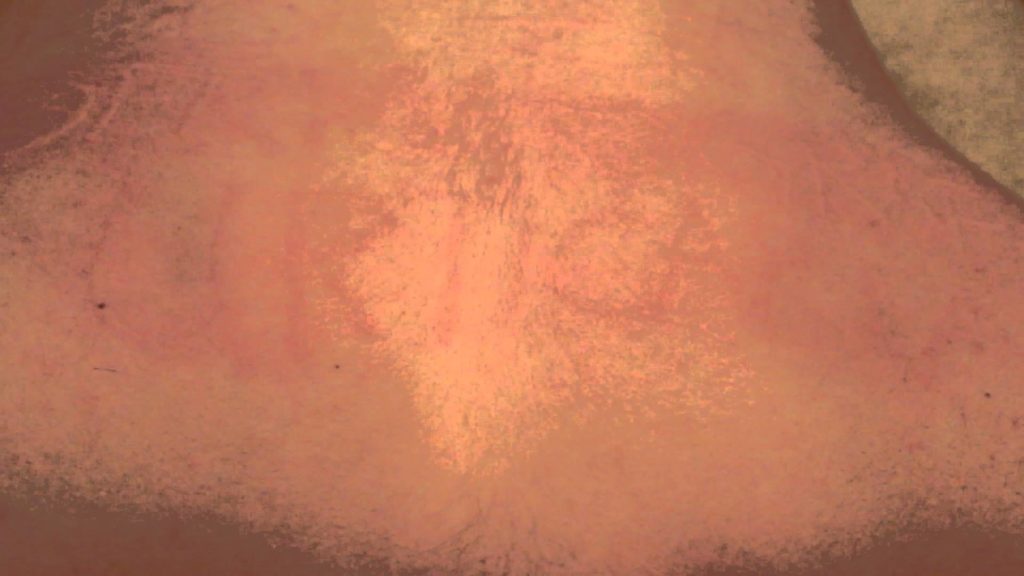Urticaria – also known as hives, weals, welts or nettle rash – is a raised, itchy rash that appears on the skin. It may appear on one part of the body or be spread across large areas.
The rash is usually very itchy and ranges in size from a few millimetres to the size of a hand.
Although the affected area may change in appearance within 24 hours, the rash usually settles within a few days.
Doctors may refer to urticaria as either:
acute urticaria – if the rash clears completely within six weeks
chronic urticaria – in rarer cases, where the rash persists or comes and goes for more than six weeks, often over many years
A much rarer type of urticaria, known as urticaria vasculitis, can cause blood vessels inside the skin to become inflamed. In these cases, the weals last longer than 24 hours, are more painful, and can leave a bruise.
When to seek medical advice
Visit your GP if your symptoms don’t go away within 48 hours.
You should also contact your GP if your symptoms are:
severe
causing distress
disrupting daily activities
occurring alongside other symptoms
Who’s affected by urticaria?
Acute urticaria (also known as short-term urticaria) is a common condition, estimated to affect around one in five people at some point in their lives.
Children are often affected by the condition, as well as women aged 30 to 60, and people with a history of allergies.
Chronic urticaria (also known as long-term urticaria) is much less common, affecting up to five in every 1,000 people in England.
What causes urticaria?
Urticaria occurs when a trigger causes high levels of histamine and other chemical messengers to be released in the skin.
These substances cause the blood vessels in the affected area of skin to open up (often resulting in redness or pinkness) and become leaky. This extra fluid in the tissues causes swelling and itchiness.
Histamine is released for many reasons, including:
an allergic reaction – such as a food allergy or a reaction to an insect bite or sting
cold or heat exposure
infection – such as a cold
certain medications – such as non-steroidal anti-inflammatory drugs (NSAIDs) or antibiotics
However, in many cases of urticaria, no obvious cause can be found.
Some cases of long-term urticaria may be caused by the immune system mistakenly attacking healthy tissue. However, this is difficult to diagnose and the treatment options are the same.
Certain triggers may also make the symptoms worse. These include:
drinking alcohol or caffeine
emotional stress
warm temperature
Read more about the causes of urticaria.
Diagnosing urticaria
Your GP will usually be able to diagnose urticaria by examining the rash. They may also ask you questions to find out what triggered your symptoms.
If your GP thinks that it’s caused by an allergic reaction, you may be referred to an allergy clinic for an allergy test. However, if you’ve had urticaria most days for more than six weeks, it’s unlikely to be the result of an allergy.
You may also be referred for a number of tests, including a full blood count (FBC), to find out whether there’s an underlying cause of your symptoms.
Read more about diagnosing urticaria.
Treating urticaria
In many cases, treatment isn’t needed for urticaria, because the rash often gets better within a few days.
If the itchiness is causing you discomfort, antihistamines can help. Antihistamines are available over the counter at pharmacies – speak to your pharmacist for advice.
A short course of steroid tablets (oral corticosteroids) may occasionally be needed for more severe cases of urticaria.
If you have persistent urticaria, you may be referred to a skin specialist (dermatologist). Treatment usually involves medication to relieve the symptoms, while identifying and avoiding potential triggers.
Read about treating urticaria.
Complications of urticaria
Around a quarter of people with acute urticaria and half of people with chronic urticaria also develop angioedema, which is a deeper swelling of tissues.
Chronic urticaria can also be upsetting and negatively impact a person’s mood and quality of life.
Angioedema
Angioedema is swelling in the deeper layers of a person’s skin. It’s often severe and is caused by a build-up of fluid. The symptoms of angioedema can affect any part of the body, but usually affect the:
eyes
lips
genitals
hands
feet
Medication such as antihistamines and short courses of oral corticosteroids (tablets) can be used to relieve the swelling.
Read more about treating angioedema.
Emotional impact
Living with any long-term condition can be difficult. Chronic urticaria can have a considerable negative impact on a person’s mood and quality of life. Living with itchy skin can be particularly upsetting.
One study found that chronic urticaria can have the same negative impact as heart disease. It also found that one in seven people with chronic urticaria had some sort of psychological or emotional problem, such as:
See your GP if your urticaria is getting you down. Effective treatments are available to improve your symptoms.
Talking to friends and family can also improve feelings of isolation and help you cope better with your condition.
Read about how talking to others can help.

